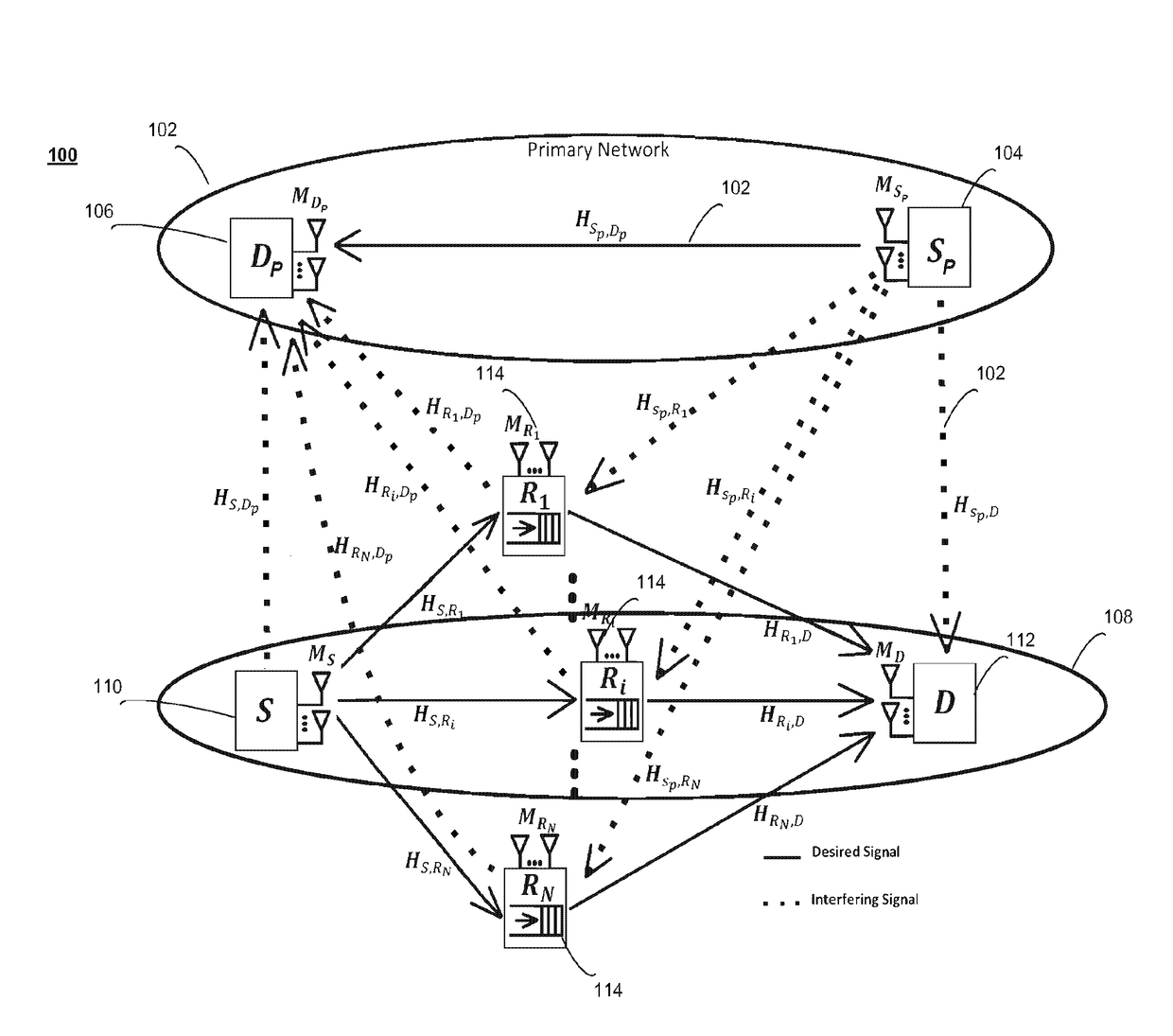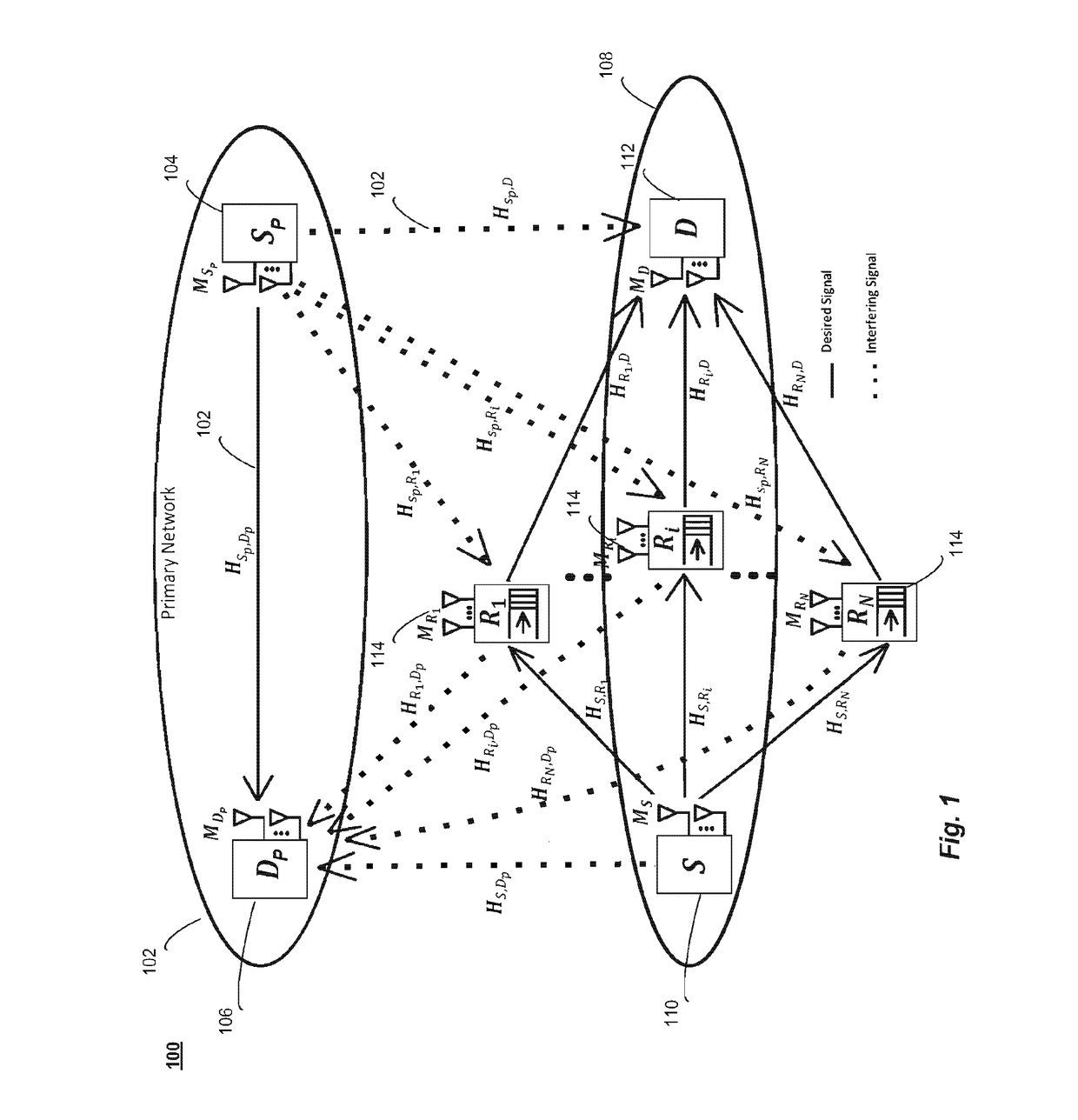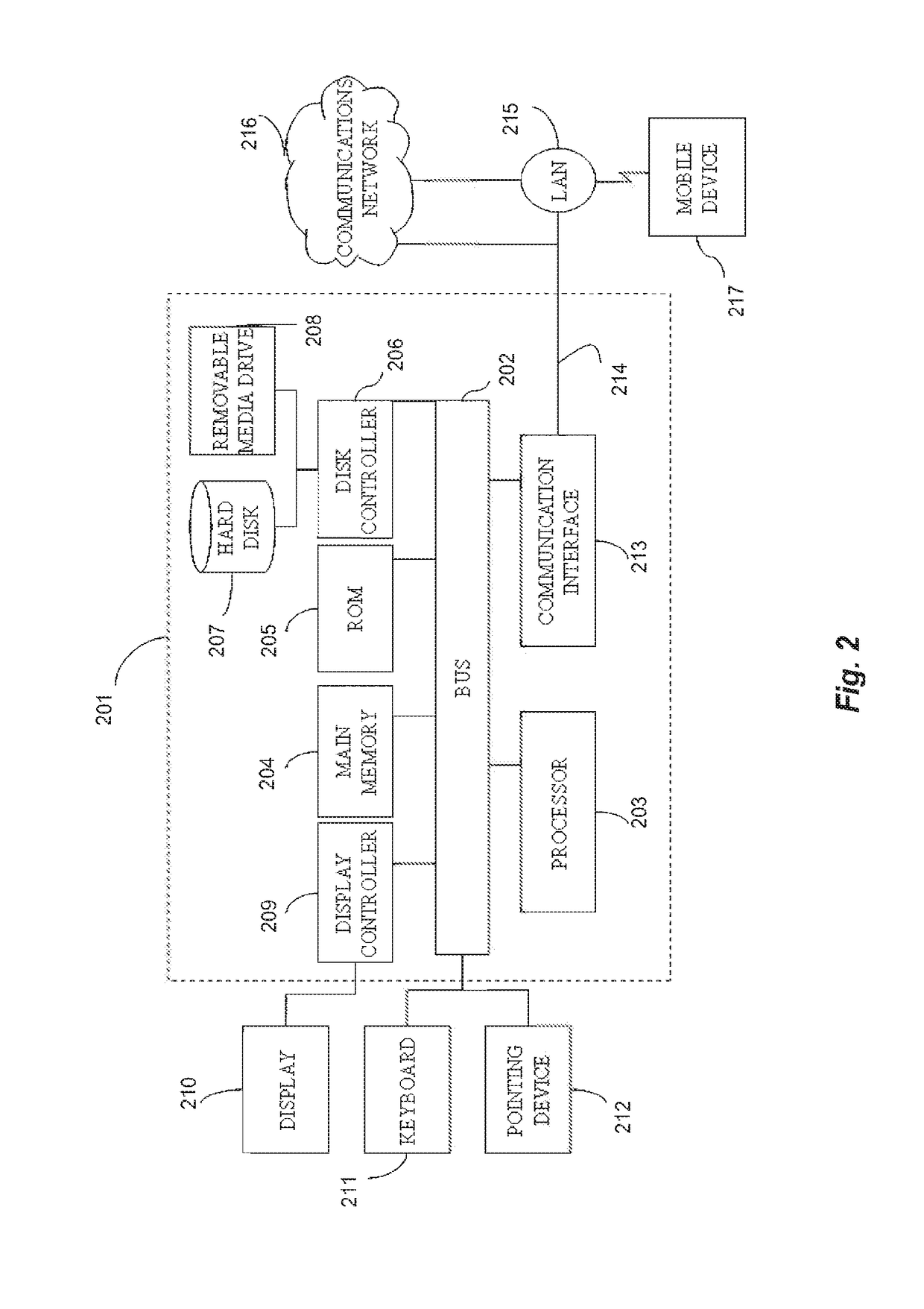Low complexity relay selection and power allocation scheme for cognitive MIMO buffer-aided decode-and-forward relay networks
a relay network and low complexity technology, applied in the field of low complexity relay selection and power allocation scheme for buffer-aided decode and forward relay networks, can solve the problems of slow and complicated process, more investigation, interference affecting both pn and sn, etc., and achieve the effect of maximizing the single-hop normalized sum ra
- Summary
- Abstract
- Description
- Claims
- Application Information
AI Technical Summary
Benefits of technology
Problems solved by technology
Method used
Image
Examples
Embodiment Construction
[0026]The description provided herein is presented to enable one of ordinary skill in the art to make and use the invention and is provided in the context of a patent application and its requirements. Various modifications to the exemplary embodiments and the principles and features described herein will be readily apparent. The exemplary embodiments are mainly described in terms of particular processes and systems provided in particular implementations. However, the processes and systems will operate effectively in other implementations. Phrases such as “exemplary embodiment”, “one embodiment” and “another embodiment” may refer to the same or different embodiments. The embodiments are described with respect to methods that may include more or less components than those shown, and variations in the arrangement and type of the components may be made without departing from the scope of the invention.
[0027]The exemplary embodiments are described in the context of methods having certain...
PUM
 Login to View More
Login to View More Abstract
Description
Claims
Application Information
 Login to View More
Login to View More - R&D
- Intellectual Property
- Life Sciences
- Materials
- Tech Scout
- Unparalleled Data Quality
- Higher Quality Content
- 60% Fewer Hallucinations
Browse by: Latest US Patents, China's latest patents, Technical Efficacy Thesaurus, Application Domain, Technology Topic, Popular Technical Reports.
© 2025 PatSnap. All rights reserved.Legal|Privacy policy|Modern Slavery Act Transparency Statement|Sitemap|About US| Contact US: help@patsnap.com



